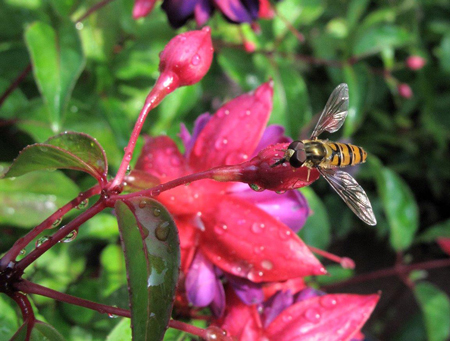You searched for:
“insect”
Word Entries containing the term:
“insect”
Entomology or Insect Terms
- An Introduction to the Study of Insects by Donald J. Borror and Dwight M. DeLong; Holt, Rinehart and Winston; New York; 1964.
- General and Applied Entomology by V.A. Little; Harper & Row, Publishers; New York; 1957.
- Insects of the World by Anthony Wootton; Blandford Press Ltd.; New York; 1984.
- Spiders of the World by Rod & Ken Preston-Mafham; Facts on File Publications; New York; 1984.
- The Ant Realm by Ross F. Hutchins; Dodd, Mead & Company; New York; 1967.
- The Ants by Bert Holldobler and Edward O. Wilson; The Belknap Press of Harvard University Press; Cambridge, Massachusetts; 1990.
This entry is located in the following unit:
Bibliography or Lists of Glossary-Term Sources
(page 1)
Insect Gets Nectar from Flowers

Here is a hoverfly, also called a flower fly or a syrphid fly; which is part of the insect family Syrphidae and the adults of this group are often seen hovering or nectaring on flowers because they are known to feed primarily on nectar and pollen.
This entry is located in the following unit:
Views of Nature
(page 1)
In the strict sense, a colony of eusocial insects: Examples of insect societies are found among ants, termites, eusocial wasps, or bees.
In the broad sense, an insect society is any group of presocial or eusocial insects.
This entry is located in the following unit:
Ant and Related Entomology Terms
(page 9)
The systematic study of all aspects of the biological basis of social behavior in insects: Insect sociobiology investigates such aspects of behavioral conduct such as mating practices, pack hunting, and territorial fighting.
This entry is located in the following unit:
Ant and Related Entomology Terms
(page 10)
An insect that shares the essentials of life, like shelter, food, defense, and cooperation in reproduction: In the strict sense, a true social insect is one that belongs to a eusocial species; in other words, it is an ant, a termite, or one of the eusocial wasps or bees.
In the broad sense, a social insect is one that belongs to either a pre-social or eusocial species.
This entry is located in the following unit:
Ant and Related Entomology Terms
(page 19)
